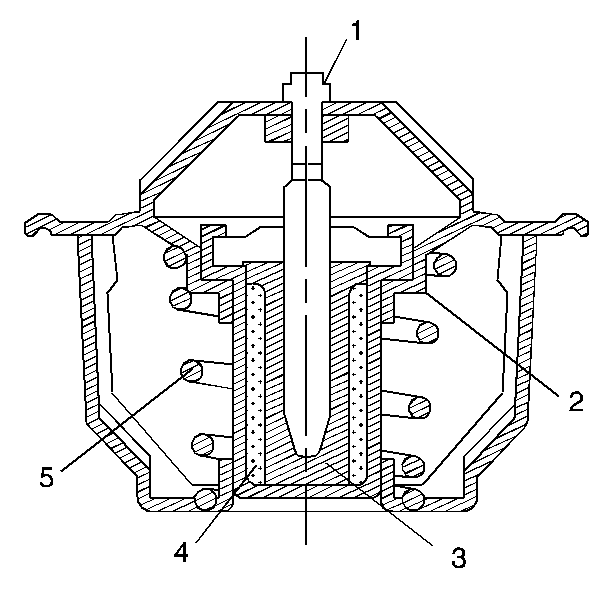The cooling system uses a wax pellet type thermostat. The thermostat performs the following functions for the cooling system:
| • | Controls the flow of engine coolant |
| • | Provides fast engine warm up |
| • | Regulates the engine coolant temperature |

The wax pellet element (4) in the thermostat expands when it is heated, and contracts when it is cooled down. The pellet connects through a piston (1) to a valve (2). When the pellet is heated, pressure is exerted against a rubber diaphragm (3) which forces the valve to open. As the pellet is cooled, the contraction allows the spring (5) to close the valve (2). While the engine coolant is cold, the valve (2) remains closed. This prevents engine coolant circulation through the radiator. At this point, engine coolant is only allowed to circulate throughout the engine in order to quickly warm the engine.
As the engine coolant warms, the wax pellet (4) expands and the thermostat valve (2) opens. This allows engine coolant to flow through the radiator, where the heat dissipates through the radiator tubes and fins. This opening and closing of the thermostat permits enough engine coolant to enter the radiator in order to keep the engine within operating temperature limits.
